- Home
- Alison Weir
Mary, Queen of Scots, and the Murder of Lord Darnley Page 8
Mary, Queen of Scots, and the Murder of Lord Darnley Read online
Page 8
Melville was present when, on 28 September, “with great solemnity,” Elizabeth formally created Robert Dudley Earl of Leicester, a strategem calculated to make Mary “think the more of him.” It was on this occasion that Melville first saw Darnley, who, “as nearest Prince of the Blood, did bear the sword of honour” before the Queen. After the ceremony was over, Elizabeth asked Melville, “How do you like my new creation?” Melville was carefully diplomatic, but Elizabeth was shrewd and, pointing towards Darnley, said, “And yet ye like better of yonder long lad!” Melville replied, “No woman of spirit would make choice of such a man, that was liker a woman than a man, for he is very lusty [pleasing], beardless and lady-faced.” Later, Melville recorded that he had spoken disparagingly because “I had no will that the Queen of England should think I liked Lord Darnley or had any eye or dealing that way.” Elizabeth later told him that Darnley “was one of the two that she had in her head to offer our Queen, as born within the realm of England,” but Melville wisely did not rise to the bait.48
When Melville returned to Scotland, he may have carried with him the famous heart-shaped Lennox (or Darnley) Jewel, which was perhaps a gift from Lady Lennox to her husband, and may well have contained in its elaborate symbolism coded messages that could not be committed to paper. It used to be thought that this was a memorial ring made after the deaths of Darnley and Lennox, but its imagery is still not fully understood, and its style is that of the early 1560s.49Its Scots legend, translated, reads, “Who hopes still constantly with patience shall obtain victory in their pretence [i.e., claim].”
Elizabeth, however, was apparently determined to push the Leicester marriage, offering the English succession as bait. In November, the English and Scottish commissioners met at Berwick, where it was made clear that the English Queen would “never willingly consent” to Mary marrying anyone other than Dudley. Moray and Maitland, angry that conditions should be attached to what they believed was Mary’s right, walked out of the meeting, then wrote to Cecil insisting that Elizabeth must declare Mary her heir before they would consent to their mistress marrying an Englishman. Elizabeth, predictably, ignored this demand, but still would not abandon the idea of a match between Leicester and Mary, and negotiations dragged futilely on for several more months.
In the autumn of 1564, Elizabeth, at Mary’s request, issued Bothwell with a safe-conduct enabling him to journey to France. By November, the Earl was in Paris. His release came as unwelcome news to the Protestant Lords, and Maitland even bribed one John Wemyss to induce Bothwell’s servants to poison him, although the attempt failed. In a memorial dated 3 February 1565,50 Bothwell is listed amongst Lennox’s friends, so he presumably supported the Darnley marriage. By 10 February, Bothwell had been appointed Captain of the Scottish Guard in France. He later wrote, “I had received letters from the Queen of Scots for the French King and his Council, which made the request that I should enjoy such status and privileges as are granted to the nobility of my country according to the terms of an ancient treaty between France and Scotland.”51
Meanwhile, in Scotland, the Queen had a new favourite. In December, her French secretary, Pierre Raullet, was dismissed for accepting English bribes. He was replaced by an ambitious Italian, David Rizzio, one of the Queen’s musicians.
David Rizzio (or Riccio), was a native of Piedmont, and probably came of an ancient, patrician family. He had been born around 1533, and had come to Scotland in 1561 in the train of Robertino Solaro, Count Moretta, the Savoyard ambassador. The Queen was impressed with his fine bass voice and expertise on the lute, and persuaded him to remain at her court as part of a musical quartet formed by her valets de chambre.
Melville called Rizzio “a merry fellow and a good musician,” which probably explains why Mary enjoyed his company. He was witty, discreet and well informed, yet physically ill favoured: his enemies described him as hideously ugly, and it seems he was small, dark, swarthy and in some way deformed. What counted with Mary, though, was his loyalty, and that was never in dispute.
According to Melville, Rizzio “was not very skilful in inditing French letters,” and consequently “advices given by the Queen of England were misconstrued,” so Mary was often obliged to write her replies “over again by her own hand.” Yet for all his shortcomings, Mary came to rely upon him heavily and to take him increasingly into her confidence. As a result, Rizzio grew ever more influential and ever more arrogant and greedy, although, according to Melville, “he had not the prudence how to manage the same rightly.”
As a “sly, crafty foreigner” and a Catholic, “Seigneur Davie,” as they disparagingly called him, was predictably hated by most of the nobility as an upstart interloper. They bitterly resented “the extraordinary favour” shown him by the Queen, and Moray and Maitland feared, correctly, that Rizzio would supplant them in the Queen’s counsels. Because the Italian was so ill qualified for the job he was employed to do, Knox and many Protestant Lords suspected him of being a papal spy, and Melville put it to Mary that he was “a known minion of the Pope,” which she did not deny, but the Vatican never acknowledged his existence, and there is no record of him in its archives. Whatever the truth of this, Mary had certainly displayed poor judgement in promoting Rizzio and in openly and tactlessly preferring him over the Lords, who felt that they themselves, by virtue of their birth and status, should have been her natural counsellors.
Early in December 1564, both Mary and Lady Lennox requested Elizabeth to give Darnley leave to go to Scotland to assist his father in the legal settlement of his estates; Lady Lennox assured the Queen that the Earl and his son would return to England within a month. Not believing this for a moment, and knowing that Darnley was really being sent north to earn the Queen of Scots’ approval, Elizabeth initially refused to grant this favour; she was, after all, still hoping that Mary would accept Leicester, and Mary was now doing nothing to disabuse her of the idea. In fact, she had almost convinced Elizabeth, Maitland and Randolph that she meant after all to marry Dudley.
Over the next few weeks, Cecil and Leicester did their utmost to persuade Elizabeth to change her mind and let Darnley go to Scotland.52Cecil’s policy was “to hold the Queen [Mary] unmarried as long as he could”; Darnley would provide a temporary diversion to gain time, and Cecil had persuaded himself that the young man would not dare marry Mary without Elizabeth’s consent, especially as his mother would be remaining in England as a hostage for his good behaviour, and Darnley stood to lose everything he owned in England if he defaulted.53In Cecil’s view, Darnley was a political lightweight and a weathercock where religion was concerned, and in any case would be a less dangerous husband for Mary than a foreign Catholic prince. Cecil was backed by Leicester, who had pressing reasons of his own for wanting Mary to marry Darnley, and did all he could to promote the match, pointing out that Darnley would not dare to place the Lennox lands in England in jeopardy by remaining in Scotland without licence.
A disgruntled Randolph, who had worked tirelessly for eighteen months to promote the Leicester marriage, and had apparently received certain information about Darnley, did not want the latter in Scotland, and warned Cecil on 14 December that Elizabeth would get the blame for “sending home so great a plague into this country.”54But his remonstrances fell on deaf ears.
In late January, Elizabeth changed her mind and agreed to let Darnley go to Scotland. Her reasons for doing this have never been fully understood. She told the Spanish ambassador in London, Guzman de Silva, that it was because Leicester had refused point blank to marry Mary, and Darnley was the only viable alternative. Melville says it was because Elizabeth had been conned into believing that Mary would marry Leicester; perversely, she now feared losing him, and it was this that made her send Darnley north “in hope that he, being a handsome, lusty youth, should rather prevail, being present, than Leicester, who was absent.”55Elizabeth knew, however, that a union between Mary and Darnley would pose a dynastic threat to her throne, yet she may have come to agree with Cecil t
hat Darnley himself was less dangerous than she had feared. In fact, he might prove more of a liability to Mary than to Elizabeth, and so cause trouble in Scotland, in which case it would be to Elizabeth’s advantage to facilitate the marriage. Yet it would not be politic for her to be seen to encourage it, for she would have it appear that Mary had defied her wishes in rejecting Leicester, and could then use this as a pretext for denying Mary the English succession.
Had Elizabeth not wished Darnley to marry Mary, she would never have let him go to Scotland. The French diplomat, Michel de Castelnau, Sieur de la Mauvissière, was adamant that Elizabeth had “cast her eyes on the young Lord Darnley to make a present of him to the Scottish Queen, and found means to persuade the Queen of Scots, by several powerful considerations, that there was not a marriage in Christendom which could bring her more certain advantages.” Later, Castelnau observed, “Her Majesty did not outwardly show the joy and pleasure which was in her heart when I told her that this marriage was advancing apace. On the contrary, she affected not to approve it: which thing, however, did rather hasten than retard it. And yet I am assured [that] she used all her efforts and spared nothing to get this marriage a-going.”56De Silva also heard a rumour that the match had been arranged “with the concurrence of some of the great people here,”57and Cecil himself told Paul de Foix, the French ambassador, in March, that the marriage of the Queen of Scots was an affair in the hands of his mistress.58People in Scotland would tell Randolph that Elizabeth had sent Darnley on purpose to match their Queen “poorly and meanly,” while Mary herself later came to believe that Elizabeth had deliberately sent Darnley to her, knowing he might well ruin her.
Darnley was given leave of absence for three months, while Lennox’s licence was extended for the same period. On 3 February 1565, Darnley left for Scotland. Randolph was horrified to hear that he was on his way, for he had been convinced that his hard work for the Leicester marriage was about to bear fruit, and wrote angrily to Cecil of his fears that “one should come of whom there is so much spoken against. My whole care is to avoid the suspicion that the Queen’s Majesty [Elizabeth] was the mean and worker thereof.”
Meanwhile, an excited Lady Lennox, seeing the fulfilment of her ambitions within her grasp, was writing to Mary, urging her to take Darnley as her husband, and assuring her that he would be respectful, kind, companionable and utterly loyal. After being entertained at Berwick-upon-Tweed by the English Governor, Francis Russell, Earl of Bedford, Darnley crossed the Scottish border on 10 February. The winter weather was particularly severe, but he pressed on to Dunbar, where he spent the night of 11 February, before proceeding to Haddington. On 12 February, he was entertained by Lord Seton at Seton Palace, then went on to Edinburgh the following day.59Here, he spent three days as Randolph’s guest. As Cecil had instructed him, Randolph went out of his way to make him welcome and lent him horses. During this time, the Queen’s half-brother, Lord Robert Stewart, invited Darnley to dine at Holyrood Palace, and was very impressed with him. Darnley also visited his cousin, the Earl of Morton, and the Earl of Glencairn. Randolph reported that he had won good opinions: “His courteous dealing with all men deserves great praise, and is well spoken of.” However, he had caught “a little cold,” and did not want his mother informed, as she would be alarmed.60
Edinburgh was abuzz, however, with speculation as to the meaning of the ghostly warriors that had been heard fighting in the streets at midnight on the three nights before Darnley’s arrival. In a superstitious and credulous age, many regarded them as a warning of what the young Lord’s coming portended for Scotland and its Queen.
4
“A HANDSOME, LUSTY YOUTH”
HENRY STUART WAS THE SECOND of the eight children born to the Earl and Countess of Lennox, and was named after his august godfather, King Henry VIII, and for an older brother who had died in infancy.1 The name Darnley came from one of the Lennox estates near Glasgow: Lord Darnley was the courtesy title borne by the eldest son of the Earl of Lennox, according to English usage; in Scotland, Darnley would have been styled the Master of Lennox.
There is conflicting evidence for his date of birth, which is traditionally given as 7 December 1545, yet the continuator of Knox’s history states that he was not yet twenty-one at the time of his death in February 1567, and in March 1566, Queen Mary’s own messenger to the Cardinal of Lorraine stated that Darnley was then nineteen.2 It is likely, therefore, that he had been born on 7 December 1546.
Darnley first saw the light of day, and spent most of his youth, at his parents’ Yorkshire seat, Temple Newsham House, near Leeds, a mansion dating from about 1520, which had been given by Henry VIII to the Lennoxes at the time of their marriage. The house has been much altered since then, but some diapered Tudor brickwork survives on the west front, where the great chamber and main apartments were probably sited in Darnley’s day. The rest of the house dates mainly from the seventeenth and eighteenth centuries. An inventory of 1565 refers to “Lord Darnley’s Chamber,” in which there were tapestries with scenes of hunting and hawking and “one bedstead with gilt posts”; it also reveals that a portrait of Darnley hung in the great chamber alongside others depicting Henry VIII, Mary I, Philip of Spain and the Countess of Lennox.3
Of all the children born to the Lennoxes, only two, Henry and Charles (who was born c. 1555/6), survived infancy,4 therefore Darnley was especially precious to his parents, both of whom doted on him, spoiled him and invested their dynastic hopes in him. Near in blood to the sovereigns of England and Scotland, he was given a Renaissance education befitting a royal prince, and grew up to be just as ambitious as his mother and father, and believing that he was destined for a crown.
Darnley was reared in England as a Roman Catholic. In 1554, aged about eight, he wrote a courteous letter to Mary I, declaring that he wished his “tender years” had not prevented him from fighting against her rebels, and asking her to accept “a little plot of my own planning” called “Utopia Nova.” For his pains, the Queen rewarded him with a gold chain, for which he sent a charming note of thanks. The Lennoxes had rather hoped that she would name Darnley her heir, but were destined to be disappointed.
In 1559, after the Lennoxes had fallen from favour on the accession of Queen Elizabeth, Darnley was sent to France to complete his education, and was much praised there for his accomplishments. At some stage, he is said to have translated the works of the classical Roman author Valerius Maximus from Latin into English.
All accounts agree that Darnley was outstandingly good looking. According to Castelnau, it was “not possible to see a more beautiful prince,”5 while Buchanan called Darnley “the most handsome of our time.” He was certainly tall; analysis of a femur alleged on good grounds to be his (now in the museum of the Royal College of Physicians) suggests that his height was between 6’1’’ and 6’3’’,6 which was exceptional in an age in which the average man’s height was at most 5’6’’, and made him a fitting match for the Queen of Scots, who was herself about six feet tall. Darnley had a slim, strong athletic physique, honed by the sports in which he excelled. He had cropped fair curly hair and a clean-shaven and handsome, if rather effeminate, face; later, he grew a short beard and moustache.
Darnley was accomplished in all the traditional aristocratic pursuits. He was a gifted lute player, a good dancer, a poet and a man of letters who was proficient in Latin and French,7 and a keen and expert sportsman, skilled at swordplay, shooting, horsemanship, hunting, hawking, tennis, golf and pell-mell (croquet). He had a certain charm, was well versed in courtly manners, and was described by Randolph as “a fair, jolly young man.”8 “He could speak and write well, and was bountiful and liberal enough.”9 Indeed, he seemed “an amiable youth,”10 and his courtesy and his good looks invariably made a favourable impression on those who met him.11
Yet there was another side to Darnley, the side that was only revealed when he was bored or thwarted, and to which his loving parents were blind. For beneath the courtly veneer, he was spoi
lt, wilful, petulant, immature and, at his worst, grossly uncouth. And for all his careful education, he lacked intelligence, depth and sound judgement. Unreliable and unstable, with a quick, violent temper, he was “haughty, proud and so very weak in mind as to be a prey to all that came about him. He was inconstant, credulous and facile, unable to abide by any resolutions, capable to be imposed upon by designing men, and could conceal no secret, let it be either to his own welfare or detriment.”12 His kinsman Morton said of him that “he was such a bairn that there was nothing told him but he would reveal it,” while Melville states that he told everything to his servants, “who were not all honest.”
Throughout his adult life, Darnley made enemies not only because of his arrogance and treachery, but also through his innate selfishness, stupidity and sheer tactlessness, he being “naturally of a very insolent disposition.”13 To those who opposed him, he could be ruthless, vengeful and vicious. His expenditure on clothes shows him to have been inordinately vain, and he was also something of a gourmet. He was sexually promiscuous, “much addicted to base and unmanly pleasures”14 and excessively given to drink. His friends were mostly young men who exerted a bad influence over him. All things considered, it is hard to find much to say in extenuation, except that he was young and inexperienced, and lacked “good counsel.”15 And when illness and adversity eventually forced him to grow up, acknowledge his shortcomings and try to reform, it was by then far too late.
Such was the young man who arrived in Scotland in February 1565 to woo the unsuspecting Queen of Scots.

 Richard III and the Princes in the Tower
Richard III and the Princes in the Tower Britain's Royal Families: The Complete Genealogy
Britain's Royal Families: The Complete Genealogy The Lady in the Tower: The Fall of Anne Boleyn
The Lady in the Tower: The Fall of Anne Boleyn Six Wives of Henry VIII
Six Wives of Henry VIII Elizabeth of York: A Tudor Queen and Her World
Elizabeth of York: A Tudor Queen and Her World Captive Queen
Captive Queen Innocent Traitor
Innocent Traitor The Marriage Game
The Marriage Game A Dangerous Inheritance
A Dangerous Inheritance Katherine of Aragón: The True Queen
Katherine of Aragón: The True Queen The Marriage Game: A Novel of Queen Elizabeth I
The Marriage Game: A Novel of Queen Elizabeth I Princes in the Tower
Princes in the Tower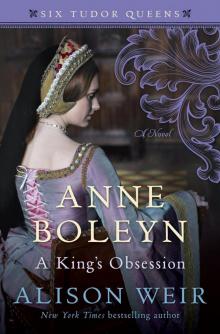 Anne Boleyn: A King's Obsession
Anne Boleyn: A King's Obsession Traitors of the Tower
Traitors of the Tower Mistress of the Monarchy: The Life of Katherine Swynford, Duchess of Lancaster
Mistress of the Monarchy: The Life of Katherine Swynford, Duchess of Lancaster Queens of the Conquest: England’s Medieval Queens
Queens of the Conquest: England’s Medieval Queens Eleanor of Aquitaine: A Life
Eleanor of Aquitaine: A Life Mary, Queen of Scots, and the Murder of Lord Darnley
Mary, Queen of Scots, and the Murder of Lord Darnley Henry VIII: The King and His Court
Henry VIII: The King and His Court Queen Isabella: Treachery, Adultery, and Murder in Medieval England
Queen Isabella: Treachery, Adultery, and Murder in Medieval England Katheryn Howard, the Scandalous Queen
Katheryn Howard, the Scandalous Queen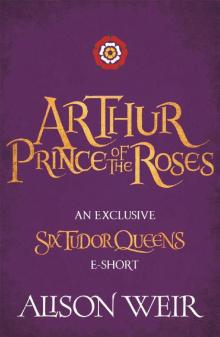 Arthur- Prince of the Roses
Arthur- Prince of the Roses The Wars of the Roses
The Wars of the Roses Eleanor of Aquitaine: By the Wrath of God, Queen of England
Eleanor of Aquitaine: By the Wrath of God, Queen of England Mary Boleyn: The Great and Infamous Whore
Mary Boleyn: The Great and Infamous Whore Jane Seymour: The Haunted Queen
Jane Seymour: The Haunted Queen Anna of Kleve, the Princess in the Portrait
Anna of Kleve, the Princess in the Portrait Lancaster and York: The Wars of the Roses
Lancaster and York: The Wars of the Roses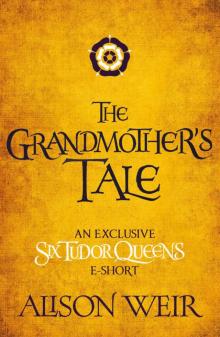 The Grandmother's Tale
The Grandmother's Tale The Princess of Scotland (Six Tudor Queens #5.5)
The Princess of Scotland (Six Tudor Queens #5.5) The Lady Elizabeth
The Lady Elizabeth Katherine Swynford: The Story of John of Gaunt and His Scandalous Duchess
Katherine Swynford: The Story of John of Gaunt and His Scandalous Duchess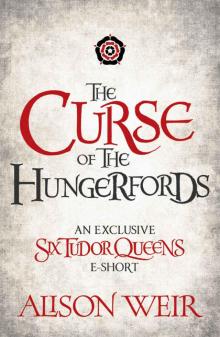 The Curse of the Hungerfords
The Curse of the Hungerfords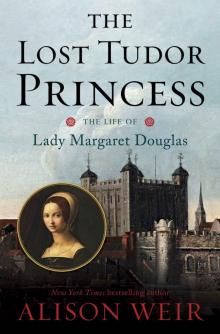 The Lost Tudor Princess: The Life of Lady Margaret Douglas
The Lost Tudor Princess: The Life of Lady Margaret Douglas Eleanor of Aquitaine
Eleanor of Aquitaine Mistress of the Monarchy
Mistress of the Monarchy The Lost Tudor Princess
The Lost Tudor Princess Henry VIII
Henry VIII Anne Boleyn, a King's Obsession
Anne Boleyn, a King's Obsession A Dangerous Inheritance: A Novel of Tudor Rivals and the Secret of the Tower
A Dangerous Inheritance: A Novel of Tudor Rivals and the Secret of the Tower Elizabeth of York
Elizabeth of York Katherine of Aragon, the True Queen
Katherine of Aragon, the True Queen Katherine Swynford
Katherine Swynford Wars of the Roses
Wars of the Roses Queens of the Conquest
Queens of the Conquest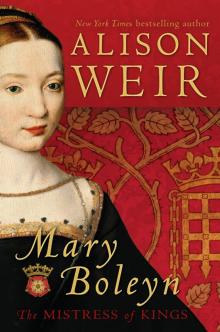 Mary Boleyn
Mary Boleyn Britain's Royal Families
Britain's Royal Families The Tower Is Full of Ghosts Today
The Tower Is Full of Ghosts Today Life of Elizabeth I
Life of Elizabeth I Anne Boleyn A King's Obssession
Anne Boleyn A King's Obssession Lancaster and York
Lancaster and York Jane Seymour, the Haunted Queen
Jane Seymour, the Haunted Queen Queen Isabella
Queen Isabella The princes in the tower
The princes in the tower